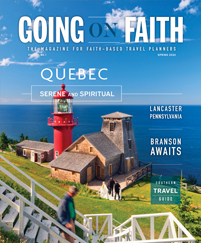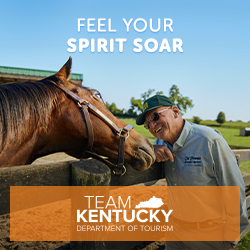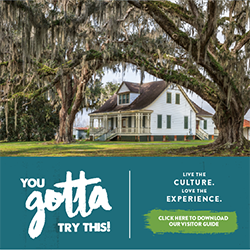He sits quietly in his saddle, inspiring us generation after generation. He is the stuff of legend, a looming large in our collective consciousness. He has endured for more than a century. He is the American cowboy.
Cowboys are both icons of history and cornerstones of modern society in the American Southwest, where cattle ranching remains a way of life. It’s hard to think about Texas, Oklahoma, New Mexico, Arizona and Nevada without thinking of cowboys. And to visit those places without sampling some of their cowboy culture would be a shame.
Fortunately, destinations throughout the Southwest offer groups numerous ways to relive the memories of their favorite cowboys of the past, and to learn about the work of modern cowboys (and cowgirls). Through museums, attractions and special heritage events, travelers can immerse themselves in cowboy culture.
Next time your group travels in the area, consider including one of these cowboy destinations in the Southwest in your itinerary.
National Cowboy and Western Heritage Museum
Oklahoma City
To get a grand introduction to the riches of cowboy culture and history, start at the National Cowboy and Western Heritage Museum in Oklahoma City. The sprawling museum covers cowboys from multiple angles, including artwork, historic representations, cinematic depictions and a variety of special events.
“A good tour here is one and a half to two hours, but you could spend all day here,” said Aaron Martin, the museum’s director of tourism marketing. “We give you an overview of everything from our world-class collection of art to our Western Performers Gallery. You can see the John Wayne collection, and items from ‘Gunsmoke,’ ‘Bonanza’ and ‘Little House on the Prairie.’”
A walk through the museum’s indoor Old West town gives groups a feel for life in the area’s cowboy heyday. The exhibit features 19 life-size buildings as well as state-of-the-art sound and lighting effects that add a sense of small-town bustle and vibrancy. In the Western performers gallery, displays feature many of the costumes and props used by the legendary stars of Western film.
The museum also showcases a fantastic collection of some of the best Western art created in the United States during an art festival each year.
“Our Prix de West brings 100 of the best Western painters and sculptors, who show about 330 pieces,” Martin said. “There’s a piece chosen every year for the museum to purchase, so we have 40 pieces of art in our Prix de West collection.”
Other annual events at the museum include a chuck-wagon festival in May, National Day of the American Cowboy in July, an art event called Cowboy Crossing in October and a cowboy Christmas ball in December.
New Mexico Farm and Ranch Heritage Museum
Las Cruces, New Mexico
Cowboys and the ranching lifestyle they represent are part of the past and the present in New Mexico, and visitors can learn about their work from various periods at the New Mexico Farm and Ranch Heritage Museum.
Situated on 47 acres in Las Cruces, the state museum uses real cattle and real cowboys to teach guests about ranching traditions and techniques.
“We have six different breeds of beef cattle, as well as dairy cows, horses, sheep, goats and donkeys,” said Craig Massey, the museum’s communications manager. “We have guys on horseback that work with the cattle. Everyone loves to see the cowboys on horseback. Sometimes, they just ride around and visit with people. They also do regular ranch work, like feeding the cattle or moving them from one pen to another.”
The cowboys and other interpreters at the museum demonstrate various kinds of work for visitors. Groups can see a dairy cow being milked, watch a blacksmith create horseshoes or attend demonstrations by weavers, quilters and wool spinners.
An indoor exhibit area at the museum explores the art and artifacts of cowboy history.
“We have a fine-arts exhibit called ‘The Cowboy Way,’” Massey said. “It’s a collection of art by Robert Schufelt, a world-renowned Western artist who draws ranching and cowboy scenes with pencil. We also have branding irons, chuck wagons and a lot of things to do with the cowboy tradition.”
Groups can tour the museum on a tractor-pulled trolley, with docents describing the different exhibits and animals along the way.
Texas Cowboy Hall of Fame
Fort Worth, Texas
Cattle ranching isn’t just history in Texas — it remains a widespread way of life and goes a long way toward shaping the culture of the state. At the Texas Cowboy Hall of Fame in Fort Worth, visitors learn about the vital role that cowboy culture has played and continues to play in the Texas ethos.
“The Hall of Fame honors Texas cowboys and cowgirls that have made a significant impact on the cowboy way of life and the Western lifestyle,” said executive director Jamie Hoffman. “Right now, we have more than 105 people in the Hall of Fame.”
Hall of Fame inductees include prominent celebrities such as George Strait, Tommy Lee Jones and Nolan Ryan who have proudly embraced the cowboy lifestyle. Others are historical figures that are well known throughout Texas.
The museum also introduces visitors to many elements of early cowboy life with items and artifacts such as the wagons that performed various functions on long cattle drives along the Chisholm Trail.
“We have over 60 authentic wagons on the museum floor,” Hoffman said. “It’s the world’s largest collection of lifestyle wagons. They’re lumber wagons, milk wagons, a U.S. Mail wagon and a hearse that belonged to a Catholic vicar — wagons that people would have made a living with.”
One of the most popular wagons on display is a chuck wagon set up to replicate the scene of cowboys gathering around the fire at dinnertime.
Western Folk Life Center
Elko, Nevada
Elko, Nevada’s Western Folk Life Center chronicles the early cowboy lifestyle and its impact on the state. For an up-close cowboy encounter, there’s no better time to visit than late January, when the museum hosts the National Cowboy Poetry Gathering.
“We’re the oldest and the largest cowboy poetry gathering in the country,” said Darcy Miller, the center’s external communications director. “We have a real variety of poetry and music, as well as all kinds of other activities that are educational about Western culture. People can come and spend a few days learning about how to braid rawhide or play guitar. There’s songwriting, poetry writing, cooking and all kinds of fun things that people can get involved in.”
The hallmark of the festival is that it showcases real working cowboys and cowgirls, who gather once a year to share the hobbies and informal art forms that have long been part of the Western way of life. The gathering takes place during the winter because that’s when the cowboys and ranch hands have time to come to a festival to present their poetry and music. About 6,000 people from around the country attend the event each year.
Throughout the six-day gathering, groups can see poets and musicians performing on six stages throughout the festival grounds. The celebrations culminate each evening with a well-known headlining performer.
Cowboy Celebrations
Prescott, Arizona
About 100 miles north of Phoenix, the town of Prescott has developed a reputation as one of Arizona’s chief cowboy towns with a series of Western celebrations and events that take place throughout the year.
One of the most famous is Prescott Frontier Days.
“It’s the world’s oldest rodeo,” said Wendy Bridges, tourism coordinator for the City of Prescott. “They celebrated their 125th anniversary last year. It takes place for a week each July. Each year, the mayor proclaims it Western Wear Week, so everyone wears cowboy boots and jeans, whether they work at the bank or here at City Hall.”
The rodeo features cowboys from around the region participating in events such as bull riding and calf roping that originated on cattle ranches and the open range.
September brings Western Heritage Days, a two-day celebration of the history of the West.
“They do re-enactments, focused on the territorial times in the late 1800s,” Bridges said. “They do shootouts and all kinds of fun events. They have some Western musicians and cowboy poets, who are always popular.”
There’s more cowboy poetry at the annual Arizona Cowboy Poets Gathering, which takes place at Prescott’s Yavapai College each August.
Groups can also learn more about cowboy heritage in Prescott by visiting the Phippen Museum, with its art and history exhibits about the American West. Whiskey Row, a block of historic buildings downtown, includes a saloon that was frequented by famous Western figures such as Wyatt Earp and Doc Holliday.









